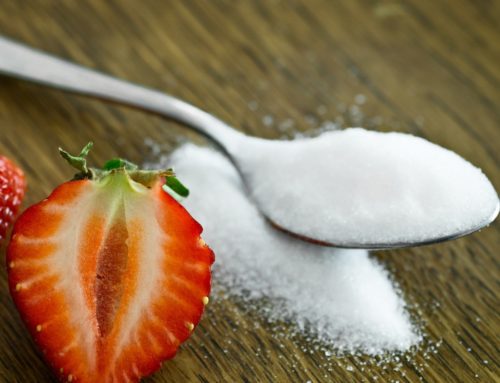The average American consumes 130 pounds of sugar each year1. It’s everywhere including fruit juices, yogurt, cereals, breads and more. So you may have found yourself asking for the sake of your health “how much sugar should I eat?”
Unfortunately, the answer isn’t that simple.
According to the American Heart Association the recommended daily intake of sugar is no more than 9 teaspoons per day for men, and no more than 6 teaspoons per day for women2. Right now, adults eat about 22 teaspoons per day, while children eat a staggering 32 teaspoons3. But even if you were to cut your sugar intake down, 6-9 teaspoons of sugar may still be too high for you on a daily basis.
Sugar consumption contributes to everything from diabetes, metabolic disorder and obesity to inflammation, joint aches and chronic pain. How much sugar is okay for your body depends on your personal state of health.
Sugar and Pain Reduction
When you eat sugar, it has many ways to stimulate the production of inflammatory messengers called cytokines4. These little messengers can travel through the body, damage tissues and create inflammation. Where there is inflammation, there is often pain.
There are about 100 million Americans that suffer from chronic pain5. Headaches, back pain and joint pain are all common types. Chronic pain can be mild, severe or episodic.
Your lifestyle can have a significant impact on the amount of pain that you experience. Diet, stress, sleep and exercise can all influence inflammation levels in the body.
When it comes to diet, removing foods that trigger inflammation (like sugar) and adding in more anti-inflammatory foods can help to reduce pain naturally. A chronic pain diet is essentially an anti-inflammatory diet.
Because eating sugar contributes to inflammation in the body, it makes sense to minimize it or remove it completely for a while. Even the recommended limit of 6-9 teaspoons could negatively impact the pain you feel.
Sugar and Weight Loss
A diet high in sugar contributes to the rising obesity epidemic in both children and adults. It increases calorie consumption, and sends your blood sugar on a roller coaster ride of spikes and dips that simultaneously affects your energy levels and many aspects of your health.
Imbalanced blood sugar can contribute to unhealthy eating, food cravings and fat storage. To make matters worse, sugar is addictive to the brain in the same way that cocaine is. Even when you reduce your sugar intake to the recommended amounts you can experience sugar cravings. Most of the sources of sugar we eat are nutritionally empty and calorically dense.
Obesity is a risk factor for a number of health conditions including heart disease, diabetes and acid reflux among many more. It can also contribute to pain6.
Fat cells aren’t just dormant storage centres for excess energy. They actually produce inflammation. By attracting macrophages (a type of immune cell), fat cells release more inflammatory messengers within the body7. This inflammation can contribute to disease and aggravate conditions of chronic pain. The more these fat cells grow, the more inflammation they can produce.
Calculate Your Sugar Intake
On average we eat more than double the recommended limit of sugar per day. But people often have improved health eating less than the recommended limit.
Calculate your sugar intake to see how much you’re consuming on a daily basis. If you’re having more than 6-9 teaspoons of sugar per day, consider a sugar detox. If you’re around the 6-9 teaspoon mark but still experiencing sugar cravings, inflammation and/or chronic pain, reducing sugar even more, could help.
Chew on this
Sugar wreaks havoc in the body. It creates inflammation that contributes to chronic pain and disease. Just a teaspoon of sugar can suppress the immune system and impair your body’s ability to heal.
It’s clear that the foods you eat can have an enormous impact on your health. Reduce your sugar intake and eat a varied diet rich in whole foods. Try eating fruit when cravings strike, for a nutrient dense high fibre healthy alternative.
What do you do to get through a sugar craving? Share your tips and tricks in the comments below.
- http://www.forbes.com/sites/alicegwalton/2012/08/30/how-much-sugar-are-americans-eating-infographic/#123894f1f718
- http://www.heart.org/HEARTORG/HealthyLiving/HealthyEating/Nutrition/Sugar-101_UCM_306024_Article.jsp#.WA0RDDKZNp8
- http://www.forbes.com/sites/alicegwalton/2012/08/30/how-much-sugar-are-americans-eating-infographic/#123894f1f718
- http://www.health.harvard.edu/family-health-guide/what-you-eat-can-fuel-or-cool-inflammation-a-key-driver-of-heart-disease-diabetes-and-other-chronic-conditions
- http://www.webmd.com/pain-management/guide/understanding-pain-management-chronic-pain
- http://www.webmd.com/pain-management/news/20120130/does-obesity-cause-pain?page=2
- http://ajcn.nutrition.org/content/83/2/461S.full





A lot to think about!